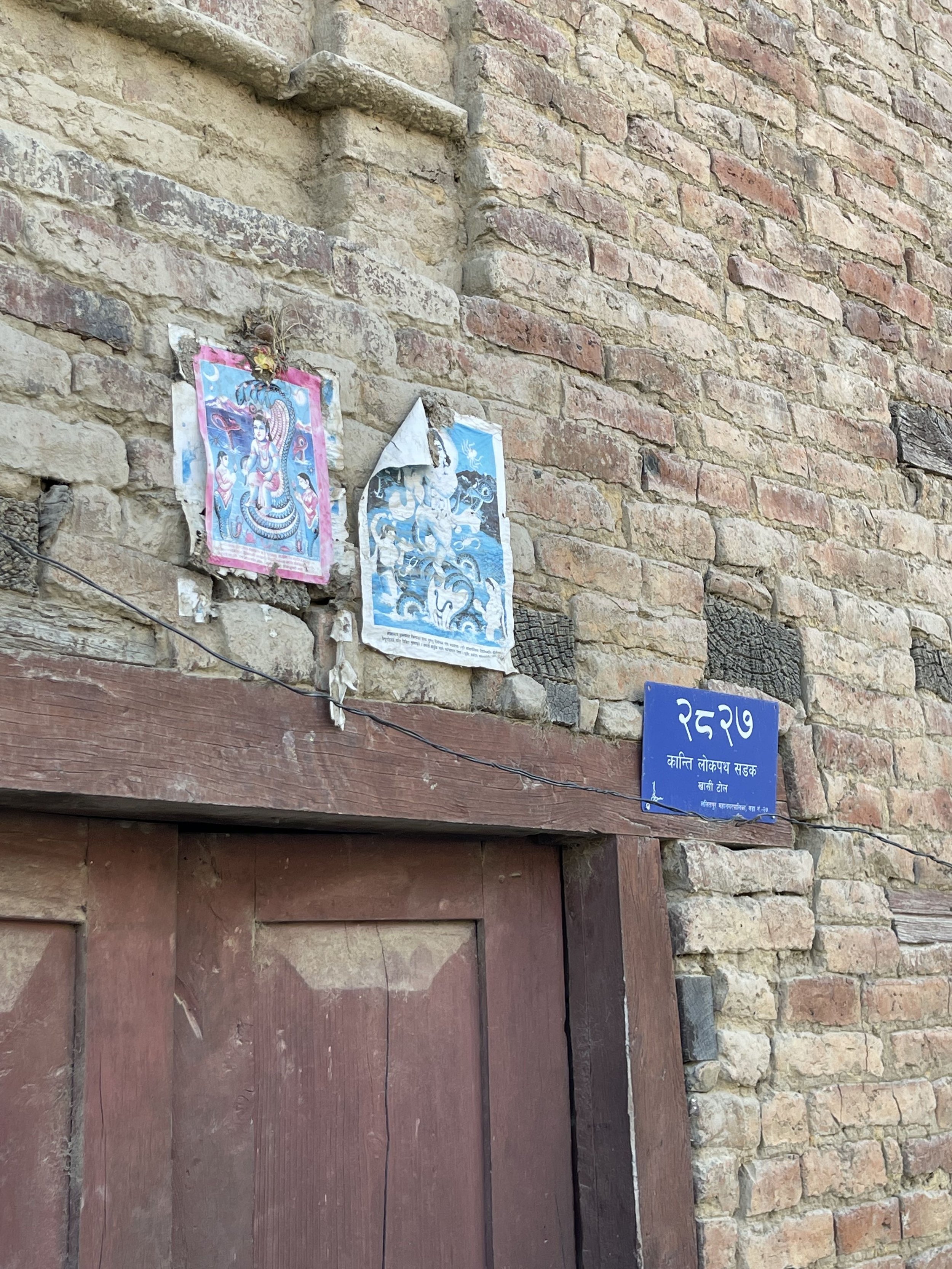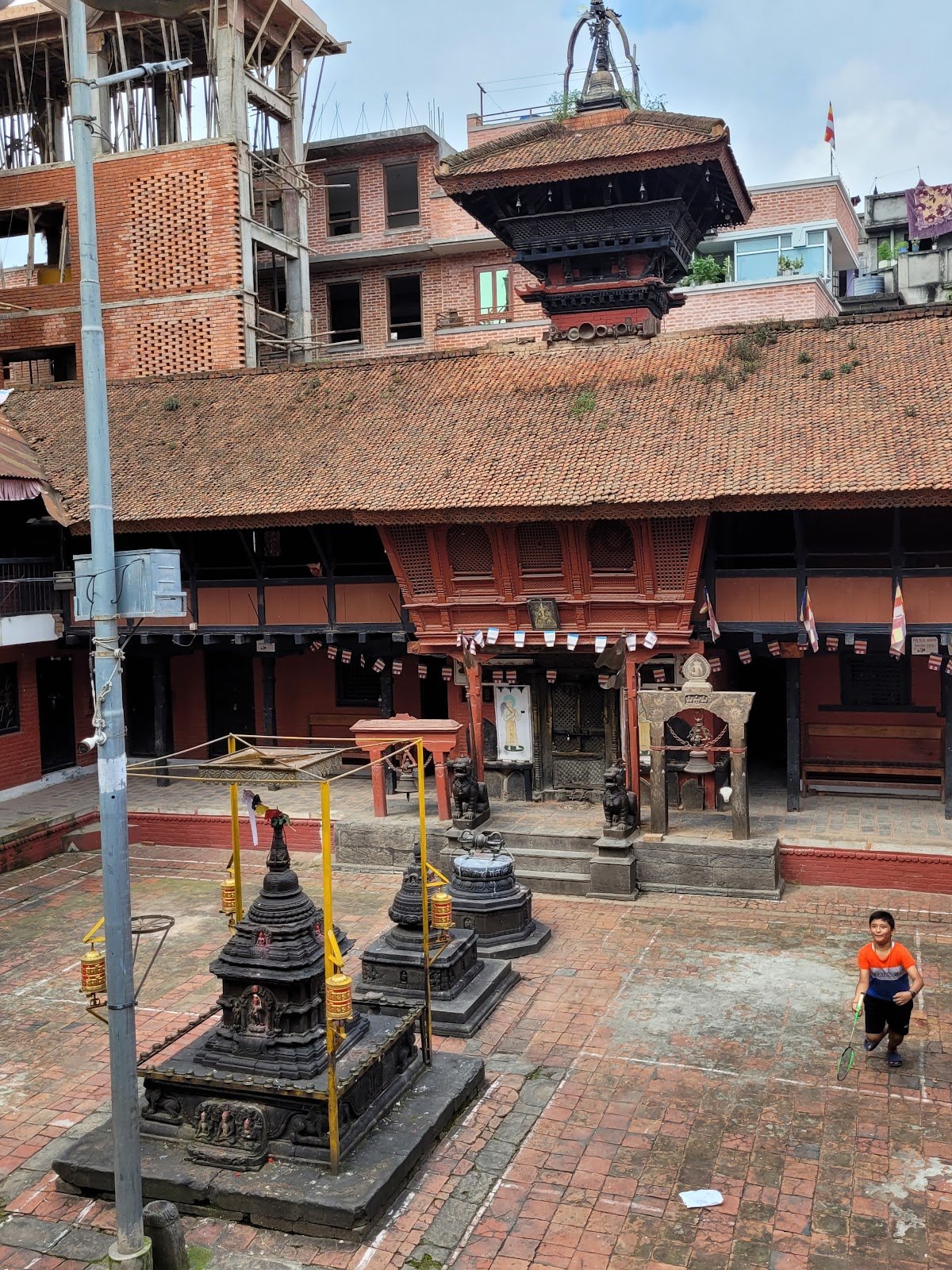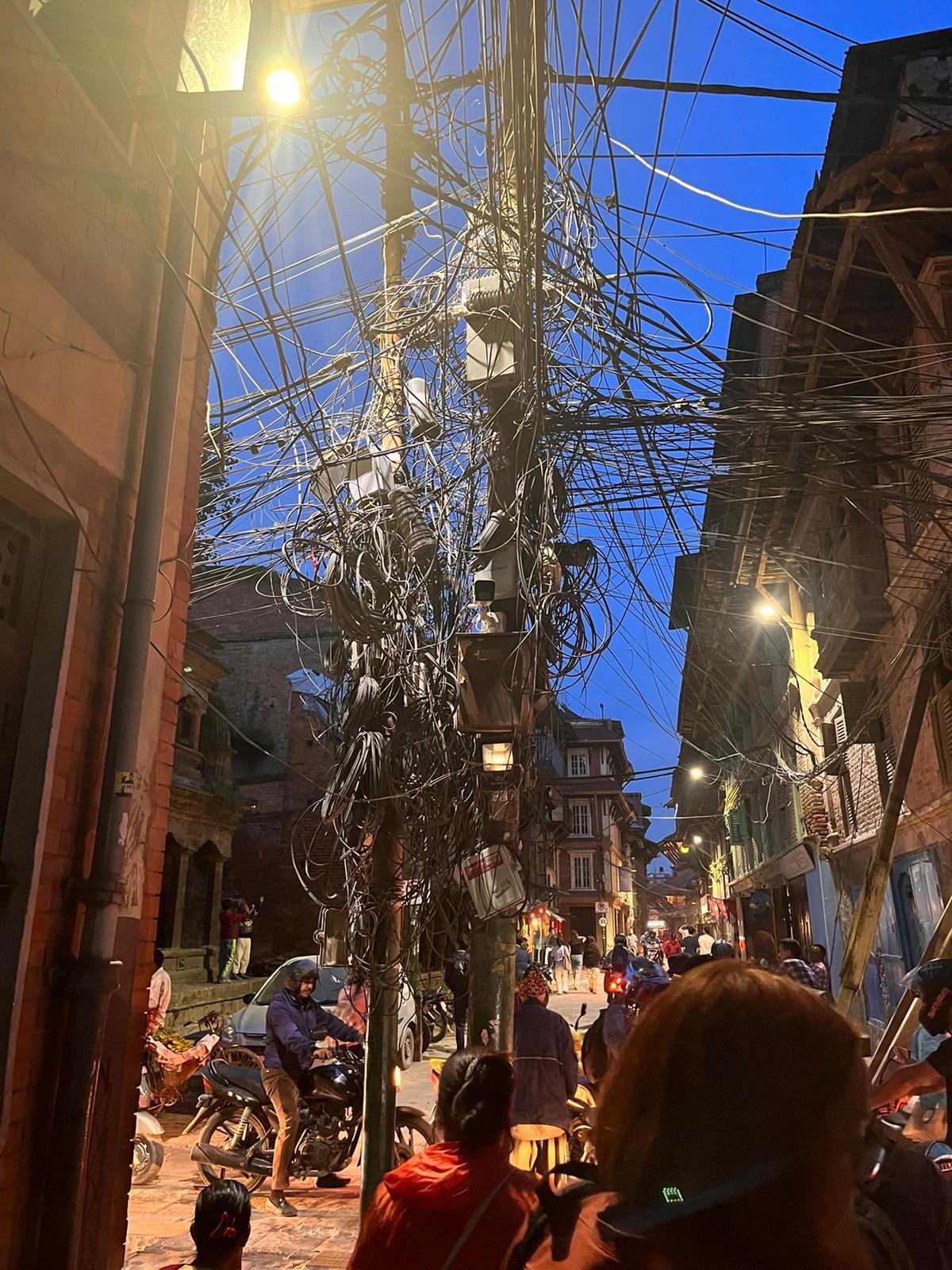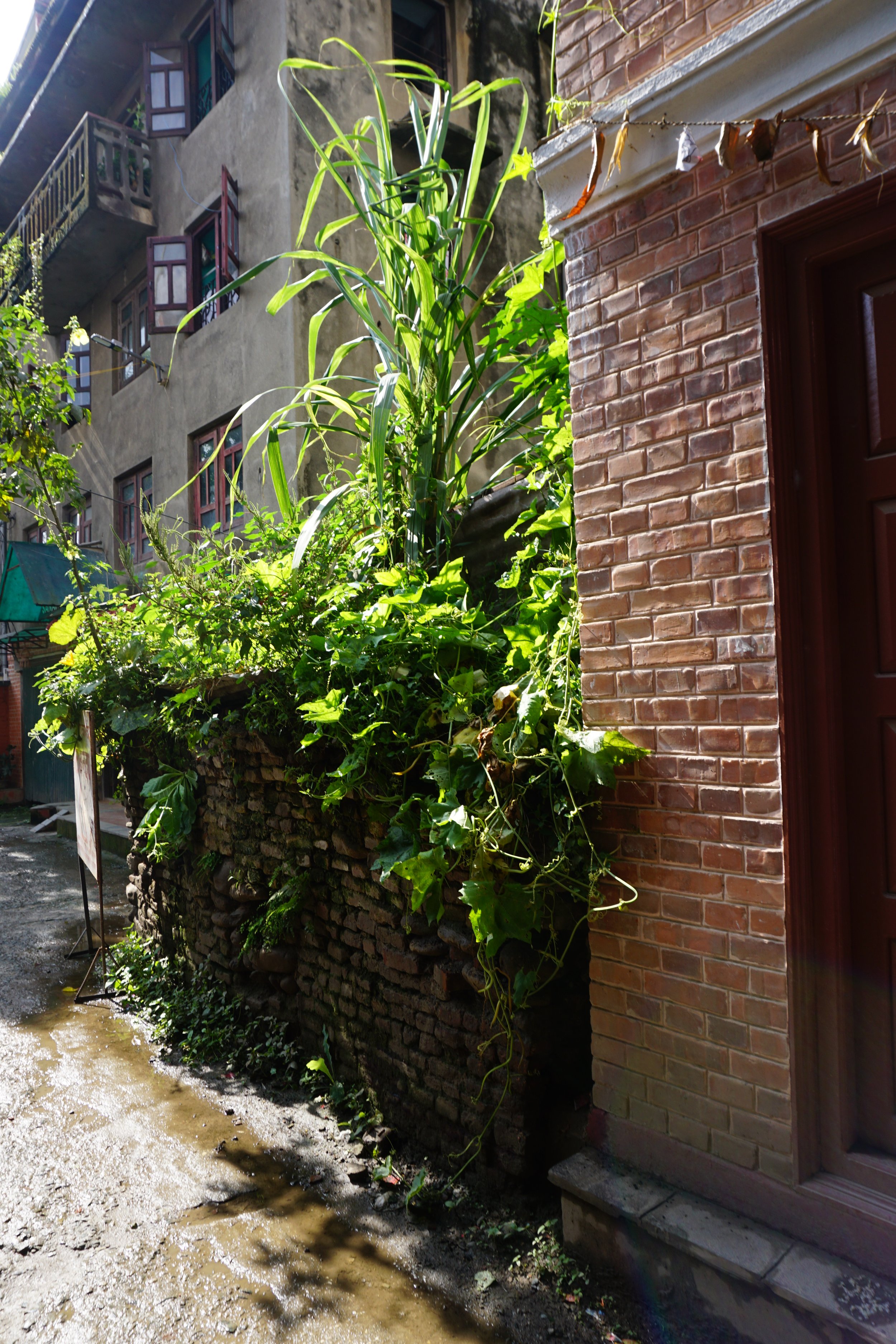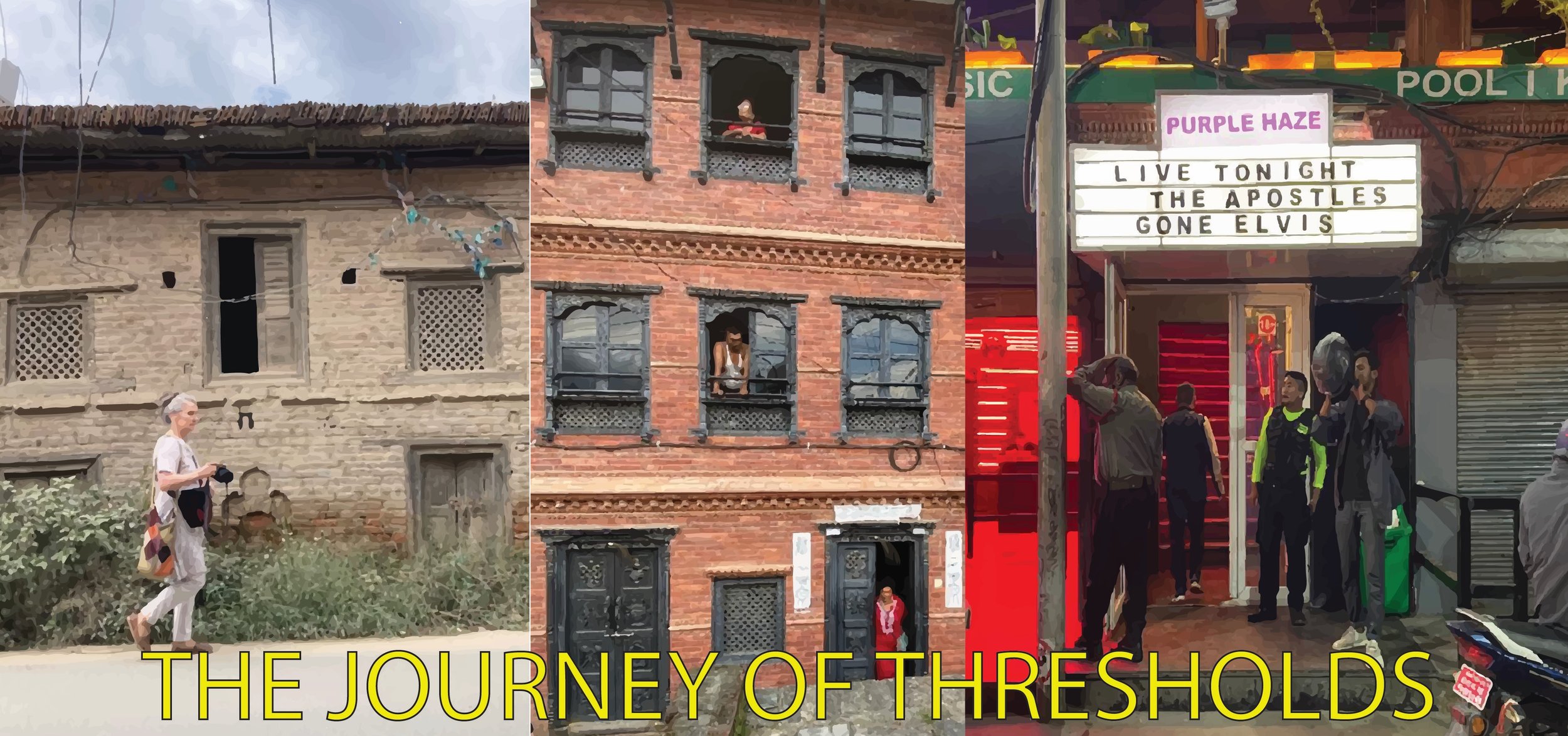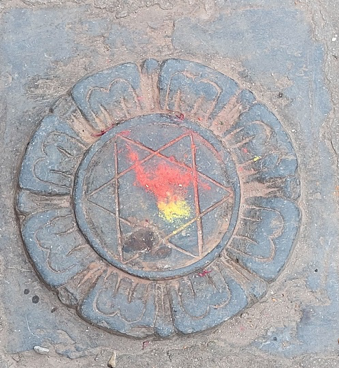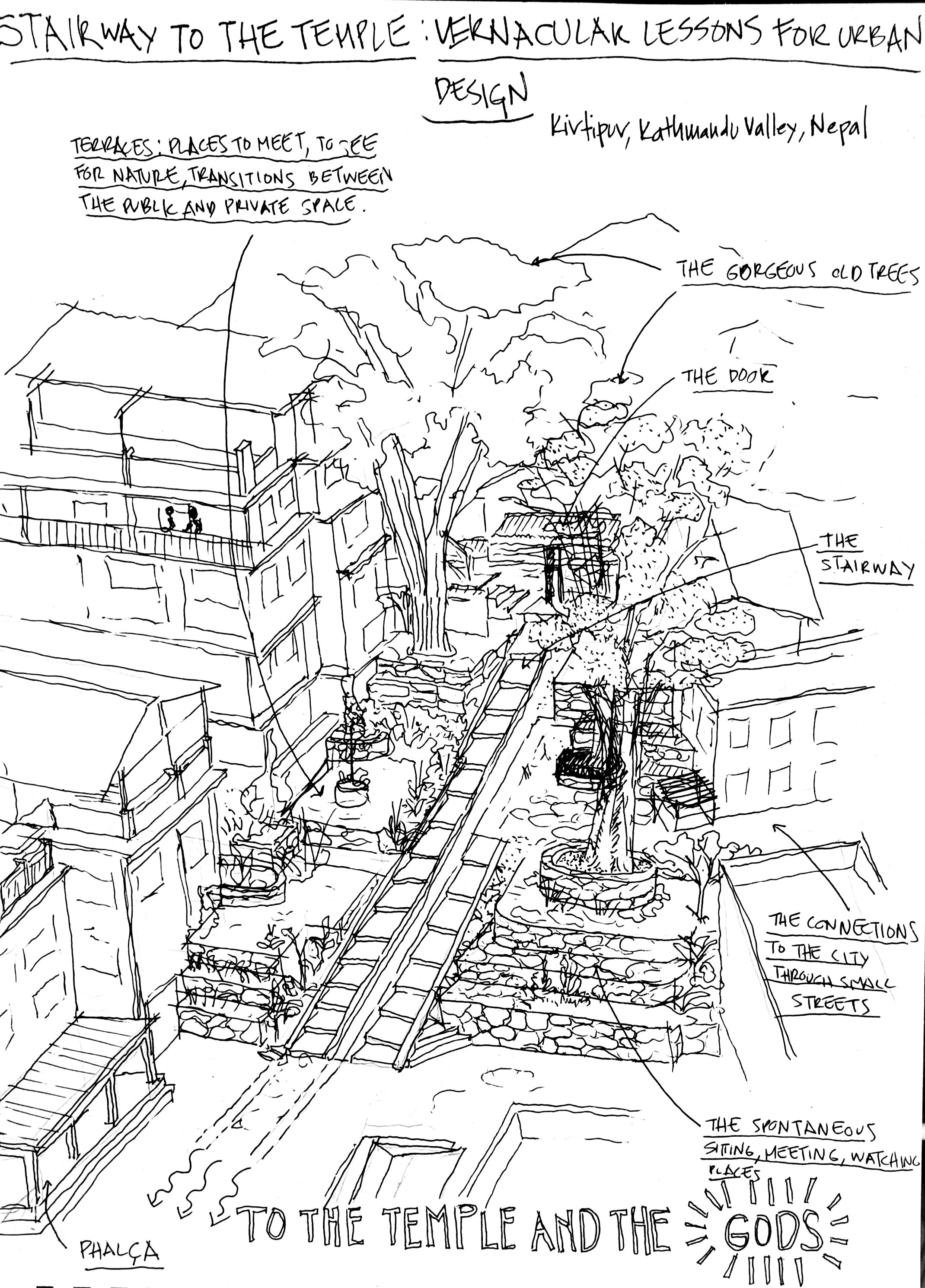Zhining Zhang is pursuing her MA in “Cultural Heritage und Kulturgüterschutz” at the Heidelberg Center for Cultural Heritage (HCCH), University of Heidelberg.
My gem is a print that is posted on the door of almost every Kathmandu home. This print is an entity which contains a series of key elements such as the deity (Nag-Panchami), water, and the serpent. People in the Kathmandu Valley make garlands of cotton cloth, make serpents out of cow dung and rice flour and worship it with cow's milk, lava, barley, sesame, nuts and a number of other religious items. It is believed that if Nag-Panchami is properly commemorated every year, the Nags will provide the people with good health, wealth and blessings in their lives (Nepal eMarket, n.d.). Interestingly, although this print does not yet have a common name, it exists in every corner of Kathmandu and its worship is still well preserved in the local tradition after all these years.
Photo: Zhining Zhang
Photo: Zhining Zhang
Once, people would buy hand painted Nag-Panchami to hang on their walls and doors to seek blessings. However, due to the mass production of prints today, the viability of this hand-painted art has been squeezed out, as the price and the inability to mass produce make it more difficult to survive. Many Chitrakar families in the Kathmandu Valley, for example, who have been handpainting for generations, are now ambivalent about giving up this 'unprofitable' hand-painting business because of the mass production of prints. The only thing that keeps them going is what they called “heritage.”
The Convention for the Safeguarding of the Intangible Cultural Heritage, which entered into force on 20 April 2006, contains five areas of intangible heritage, namely, oral traditions, performing arts, and social practices/rituals, practices concerning nature and the universe and traditional craftsmanship. However, an article (Diwasa, Bandhu and Nepal, 2007) points out that they are not complete in the Nepal context. Previously, the field of intangible cultural heritage was discussed under the term 'folklore'. In Nepal, folklore was understood to be divided mainly into two general areas: (a) Oral Traditions and Performing Arts and (b) Customary and Material Folklore. (Diwasa, Bandhu and Nepal, 2007). Of these, traditional skills of handicrafts such as these are not within the main areas of study of their intangible heritage. By reading this, I could not help but question why endangered craft traditions, such as those practiced by the Chitrakar families and passed down among the local population, were not identified as a priority for safeguarding and inscribed on the world as well as local intangible cultural heritage list. I tried searching for Nepal’s tentative list but found no nominations for such intangible cultural heritage, which leads me to wonder further whether this was related to UNESCO's The Criteria for Selection or to the local process and management of intangible cultural preservation.
Apart from this, I am also inspired by the shift in the material representation of this tradition in Kathmandu families hanging prints on their doors, i.e., from hand drawings to machine prints, and the idea that it could be also considered as an 'invention of tradition' over time, which also brings me to the concept of 'digital heritage'. In the future, when 3D printing and holographic projections become commonplace in homes, will there be new forms of 'printed matter’, such as holographic deities? If so, will they be accepted? And how do we deal with the problems that shall arise?


